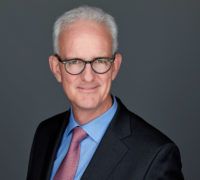It seems everyone is talking the talk on sustainability these days, but are they walking the walk? Some companies actually spend more resources on looking green than their actual environmental footprint. There are things you can look for to identify greenwashing in your clients and maybe it’s worth examining your own company to ensure you aren’t unintentionally failing in your commitment to sustainable action.
If we cannot trust the announcements made about sustainability, we cannot undertake the two central tasks of assessing any company: (1) how does it compare to competitors, and (2) is it improving over time? Here is a checklist of questions you can ask and things you can look for to discern whether a company is true to its stated green commitment:
- Does the CEO have a strong record on sustainability? If not a clear track record, does the leadership talk about their sustainable initiatives in higher-level strategies and white papers? If the CEO isn’t leading the charge on this, it is unlikely employees will follow.
- Does the company’s purpose encompass long-term sustainable goals? If the company’s purpose isn’t crafted around sustainable objectives, it is unlikely the firm will be moving towards a greener future. There should be a willingness to transform the business model if necessary.
- Has the company integrated its sustainability and strategy functions? Sustainability goals should be embedded into every facet of the firm’s operation to have a credible outcome. A good example can be seen in Schneider Electric, where the Chief Sustainability Officer is also the Chief Strategy Officer. Another option is to elevate the Chief Sustainability Officer to an Executive Committee Function.
- What is their historical performance? Has the company done what they committed to in the past? Have they delivered also what is difficult?
- Do they systemically track the key non-financial data such as CO2 emissions?
- Do their bonus systems to key managers include a sustainability component to incentivize progress?
- Do they publish their operational measures into ESG reporting and evaluations for scrutiny by potential investors?
After making sure your own company can answer these questions, start looking at your partners and vendors. This will become even more important as you move forward with your green goals.







